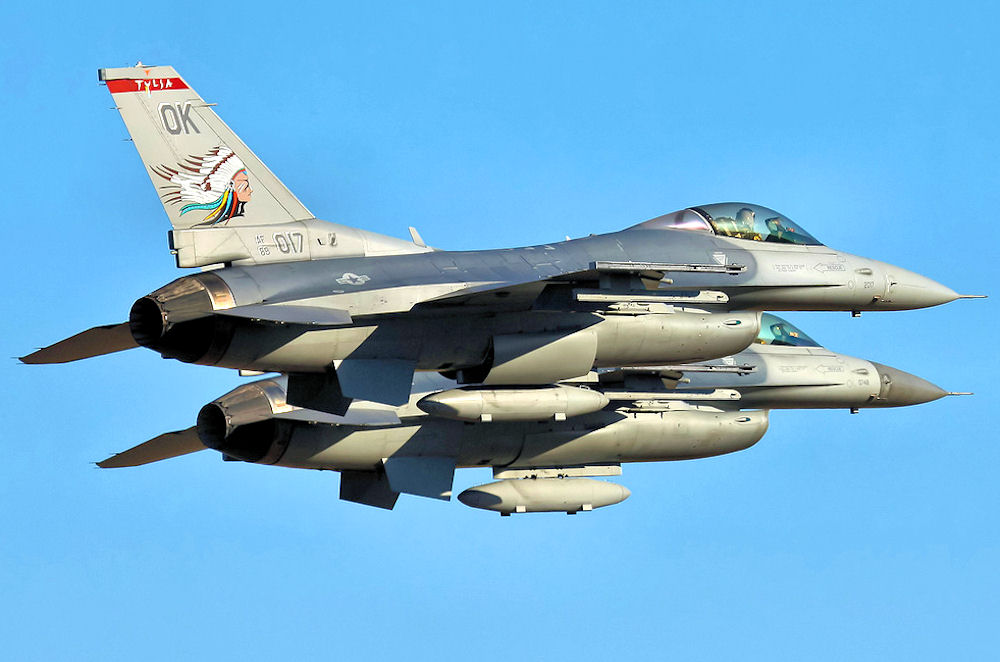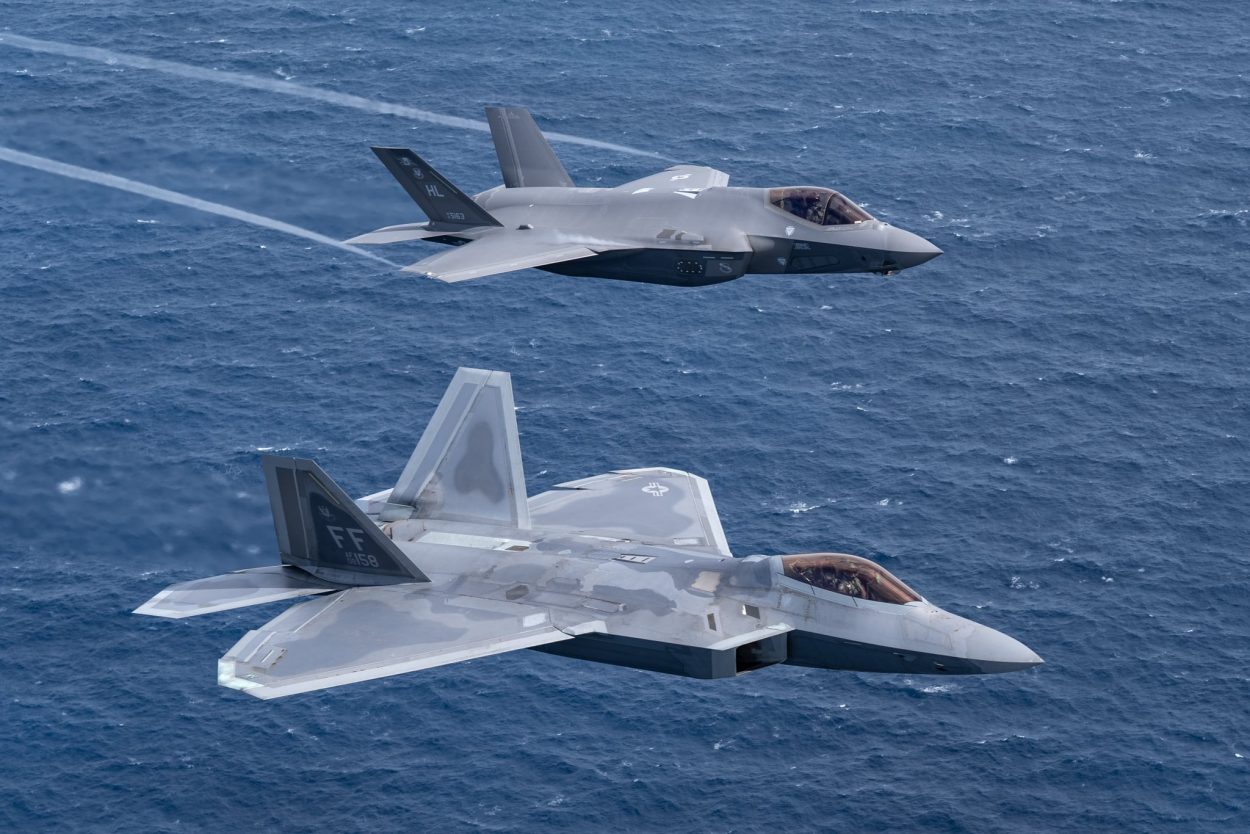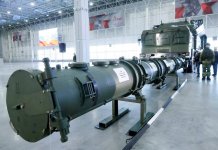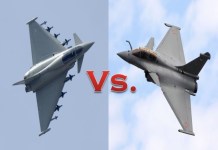A US F-16 ‘Fighting Falcon’ fighter jet, crashed in western Louisiana on March 23. The accident was reported in an uninhabited, wooded area of Beauregard Parish, near the Louisiana-Texas border.
The F-16C belonged to a Houston-based detachment of Oklahoma Air National Guard’s 138th Fighter Wing, which manages the planes at Ellington Field Joint Reserve Base. The cause of the mishap remains unknown.
The F-16C Block 42 was flown by the 125th Fighter Squadron “Tulsa Vipers” of the Oklahoma Air National Guard, The Drive reported.
The accident came a day after the crash of an F-22 Raptor stealth jet belonging to the US Air Force’s 325th Fighter Wing while landing at the Eglin Air Force Base in Florida.

According to unverified photos posted on social media shortly after the incident, the jet’s left main landing gear may have collapsed when it touched down on the runway causing the destabilized plane to veer off and come to a stop, resting nose-down in the grass.
The pilots involved in both incidents are said to be safe.
The F-16’s pilot was able to safely eject before the jet crashed and was found with no serious injuries. The pilot’s family has identified him as Major Alexander Drummond, mission commander with the 138th Fighter Wing, according to WAFB-TV.
The pilot involved in the F-22 mishap “is in good condition” and has been released from the 96th Medical Group’s care following evaluation, according to a news release from the 96th Test Wing.
The F-16 accident comes after a mishap of a Taiwanese F-16V (Viper) fighter in early January that crashed into waters east of Taiwan shortly after take-off from Chiayi Air Force Base. The 28-year-old pilot, Captain Chen Yi, lost his life in the incident.
The Fighting Falcon
The F-16 Fighting Falcon is a single-engine multirole fighter aircraft that entered service with the USAF in 1979. It was built under an agreement creating a consortium between the US and four NATO countries: Belgium, Denmark, the Netherlands, and Norway.
The fighter’s key features include a frameless bubble canopy that provides the pilot unobstructed forward and upward vision, and greatly improved vision over the side and to the rear. The “fly-by-wire” system enables excellent flight control which relays commands through electrical wires instead of usual cables and linkage controls.
The aircraft can withstand up to 9 G’s – 9 times the force of gravity. To ensure accurate control of the aircraft for the pilot during high G-force combat maneuvers, a side-stick controller is used instead of the conventional center-mounted stick.
Also, to help pilots tolerate the 9-G force, the seat is reclined 30 degrees, and the side-mounted control stick has a rest to support the pilot’s arm when it weighs many times normal.

The F-16V or Viper is the latest variant of the Fighting Falcon. It features more weaponry, enhanced electronic warfare systems, precise GPS navigation, and the capability to avoid collisions on its own.
The F-16V’s more powerful landing gear allows it to carry more fuel and weapons. The fighter jet can be deployed in the suppression of enemy air defenses (SEAD) missions, air-to-ground and air-to-air combat.
Chequered Past
The F-16s are known to have had several gearbox failures, engine shutdowns and electrical wiring failures since the 1980s and 90s. Of late, the collapse of landing gears has plagued the aircraft. In 2019, a compliance technical order was issued for the replacement of landing gear actuators in all USAF F-16C/D Block aircraft before March 2 of this year.
According to the USAF’s Safety Center, there were 3 F-16 accidents last year, including 1 “Class A” mishap that destroyed the airplane and killed its pilot, and 2 “Class B” mishaps.
A Class A accident involves a fatality or loss of the aircraft or total damage to the tune of $2.5 million whereas a Class B accident is one that causes serious injury and/or damage to the tune of $500,000- $2.5 million. There have been 24 Class A and 14 Class B mishaps involving USAF F-16s since 2015.

On the other hand, the F-22 Raptor is a 5th generation dual-engine stealth fighter jet that entered service with USAF in 2005 to replace the F-15 Eagles as America’s next air superiority fighter jet.
The fighter possesses a sophisticated sensor suite enabling the pilot to track, identify, shoot and kill air-to-air threats. Significant advances in cockpit design consisting of hands-on throttle and stick control (HOTAS) and multifunction display provide a comprehensive view of the air and ground tactical situation to improve the pilot’s situational awareness.
The F-22 can carry 1,000-pound GBU-32 Joint Direct Attack Munitions for air-to-ground attacks; and the AIM-120 AMRAAM and the AIM-9 Sidewinder missiles for air-to-air combat.
A year ago, F-22 experienced a similar landing gear collapse accident which was also a jet from the 325th Fighter Wing at Eglin Air Base. The F-22 fleet also has a continuing problem of landing gear mishaps.
Over its 21-year life, the F-22 has suffered 32 Class A mishaps and 50 Class B mishaps according to the Air Force Safety Center.
- Written by Tanmay Kadam/EurAsian Times Desk
- Contact the author at etdesk@eurasiantimes.com
- Follow EurAsian Times on Google News




